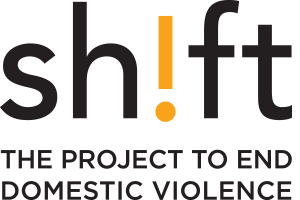The ConnectED Parents approach consists of six core components. They are:
What is the ConnectED Parents Approach?
This includes training leaders in the setting to plan how they will flood their setting with cues that promote and reinforce healthy relationships.
This includes training parent leaders in the setting to provide support to fellow parents and to model behaviours that reinforce the importance for parents to promote healthy youth relationships.
This is when community and parent leaders apply their new skills in the setting!
Parents receive approximately 60 text messages over 6 months that develop their knowledge, skills, and behaviours to promote healthy youth relalationships.
Provide one-on-one coaching sessions with community and parent leaders and conduct research to understand how well ConnectED Parents works

1. Select a partner setting. This setting should be a place where parents are already going to, such as a workplace, minor sports or extracurricular place where youth and parents go, a faith-based setting, or an informal parent group.
Why is this important?
Traditional programs for preventing adolescent dating violence can be inconvenient and intimidating for parents. ConnectED Parents targets this problem by meeting parents in the places where they already go and leveraging the influence of respected leaders to help parents in the setting to learn about healthy youth relationships.

2. Build skills in leaders to design a healthy social environment. This includes training leaders in the setting to plan how they will flood their setting with cues that promote and reinforce healthy relationships.
Why is this important?
A healthy social environment is crucial for parents to feel a sense of belonging and safety[i], which in turn can positively impact their relationships and engagement with their teens. When parents have high-quality relationships with their teens based on trust, respect, shared power, and safety, they are more likely to effectively communicate about healthy dating relationships. ConnectED Parents focuses on creating healthy social environments that support healthy relationships between parents and their teens.

3. Build skills in parent leaders to offer peer support. This includes training parent leaders in the setting to provide support to fellow parents and to model behaviours that reinforce the importance for parents to promote healthy youth relationships.
Why is this important?
Having a support system is key for engaging parents to promote healthy youth relationships. Parents who receive emotional support from trusted friends or respected leaders are more likely to try new behaviors, including having conversations with their teens about healthy relationships. By seeing other parents in their social circle model healthy relationship behaviors, parents are more likely to mirror these behaviors in their own lives and with their children.
With the support of those they know and respect, parents are better equipped to have meaningful conversations with their teens about healthy dating relationships.

4. Work with leaders to create healthy social environments and offer peer support to parents. This is when community and parent leaders apply their new skills in the setting!
Why is this important?
This is the time to test which parts of ConnectED parents work in engaging parents to promote healthy youth relationships – and which parts may need some improvement.

5. Send a series of text-messaging learning modules to all parents in the setting. Parents receive approximately 60 text messages over 6 months. These text messages support parents to:
- Understand adolescent dating violence
- Develop skills and confidence to facilitate productive conversations with their teens
- Develop skills to teach their teens healthy relationships skills, such as communication skills, conflict-resolution skills, and boundaries and consent
- Gain awareness of the signs of adolescent dating violence
- Build skills to respond to adolescent dating violence
Why is this important?
Although environments and social circles play a big role in improving engagement from parents, parents still need to develop skills and confidence to talk to their teens about healthy dating relationships. Text-messaging is a virtual setting where parents already go to every day – often throughout the day, making it a convenient way for parents to learn and apply their new skills. Plus, helpful features like reminders and rewards motivate parents to start a conversation that can make a real impact in their teen’s life.

6. Provide ongoing coaching and evaluation support. Coaching involves providing a series of one-on-one coaching sessions with community and parent leaders to help them trouble-shoot and reflect on what’s working and what’s not as they implement the ConnectED Parents approach.
Evaluation support is critical for understanding how and how well ConnectED Parents works to engage parents to promote healthy youth relationships and prevent adolescent dating violence. Currently, Shift is leading the evaluation of ConnectED Parents.
Why is this important?
Effective community and parent leaders require ongoing support, and that’s where ConnectED Parents comes in! Leaders receive one-on-one coaching sessions that provide personalized solutions and resources to help them create healthy social environments and support parents in promoting healthy youth relationships.
Plus, it is important to make sure ConnectED Parents works and doesn’t cause harm. Shift has created a comprehensive research protocol and will be working with our project collaborators to examine the impact of ConnectED Parents. Our research findings will inform modifications that we make to the ConnectED Parents approach.
Frequently asked questions
References
[1] PREVNet. (2020, January 21). What is youth dating violence? Youth Dating Violence. https://youthdatingviolence.prevnet.ca/learn-more/everyone/what-is-youth-dating-violence/
[2] Exner-Cortens, D., Baker, E., & Craig, W. (2021). The national prevalence of adolescent dating violence in Canada. The Journal of Adolescent Health, 69(3), 495-502. https://doi.org/10.1016/j.jadohealth.2021.01.032
[3] Exner-Cortens, D., Eckenrode, J., & Rothman, E. (2013). Longitudinal associations between teen dating violence victimization and adverse health outcomes. Pediatrics, 131(1), 71-78. https://doi.org/10.1542/peds.2012-1029
[4] Exner-Cortens, Eckenrode, J., Bunge, J., & Rothman, E. (2016). Revictimization after adolescent dating violence in a matched, national sample of youth. Journal of Adolescent Health, 60(2), 176-183. https://doi.org/10.1016/j.jadohealth.2016.09.015
[5] Exner-Cortens, Eckenrode, J., Bunge, J., & Rothman, E. (2016). Revictimization after adolescent dating violence in a matched, national sample of youth. Journal of Adolescent Health, 60(2), 176-183. https://doi.org/10.1016/j.jadohealth.2016.09.015
[6] Rothman, E. F., Miller, E., Terpeluk, A., Glauber, A., & Randel, J. (2011). The proportion of U.S. parents who talk with their adolescent children about dating abuse. Journal of Adolescent Health, 49(2), 216–218. https://doi.org/10.1016/j.jadohealth.2011.05.005
[8] Van Gestel, L. C., Kroese, F. M., & De Ridder, D. T. D. (2018). Nudging at the checkout counter – A longitudinal study of the effect of a food repositioning nudge on healthy food choice. Psychology & Health, 33(6), 800–809. https://doi.org/10.1080/08870446.2017.1416116
[9] https://www.linkedin.com/pulse/science-mirroring-carol-kinsey-goman-ph-d-/
[10] Beau, E. L. (2017, November 21). What turns Black Friday shoppers into raging hordes?. The New York Times. https://www.nytimes.com/2017/11/21/well/mind/the-psychology-of-the-black-friday-shopping-mob.html
[11] Mayer, S., Kalil, A., Oreopoulos, P. & Gallegos, S. (n. d.). Behaviours Insights and Parenting Lab: The PACT study. Retrieved from: https://biplab.uchicago.edu/research/improving-early-literacy-skills/
[12] Kalil, A. & Mayer, S. (n. d.). Behavioural Insights and Parenting Lab: Show Up 2 Grow Up: Boosting attendance at Head Start. Retrieved from: https://biplab.uchicago.edu/research/decreasing-chronic-absenteeism/
[13] Math for parents and children together. Behavioral Insights and Parenting Lab (n.d.). https://biplab.uchicago.edu/research/promoting-early-math-skills/
[14] Bloomquist, M. L., August, G. J., Lee, S. S., Piehler, T. F., & Jensen, M. (2012). Parent participation within community center or in-home outreach delivery models of the early risers conduct problems prevention program. Journal of Child and Family Studies, 21(3), 368–383. https://doi.org/10.1007/s10826-011-9488-6
[15] Whittaker, K. A., & Cowley, S. (2012). An effective programme is not enough: A review of factors associated with poor attendance and engagement with parenting support programmes. Children & Society, 26(2), 138–149. https://doi.org/10.1111/j.1099-0860.2010.00333.x
[16] Hemmelgarn, Glisson, C., & James, L. R. (2006). Organizational culture and climate: Implications for services and interventions research. Clinical Psychology (New York, N.Y.), 13(1), 73–89. https://doi.org/10.1111/j.1468-2850.2006.00008.x; Schneider, B., Ehrhart, M., & Macey, W. (2013). Organizational climate and culture. Annual Review of Psychology, 64(1), 361-388.




 decisions.
decisions.  constantly drawing on cues from those around us to guide our decision-making and actions. For example, ever notice how you mirror the body language of the person you’re talking to? It’s a sign of engagement.
constantly drawing on cues from those around us to guide our decision-making and actions. For example, ever notice how you mirror the body language of the person you’re talking to? It’s a sign of engagement. we support parents to promote healthy youth relationships.
we support parents to promote healthy youth relationships. 
